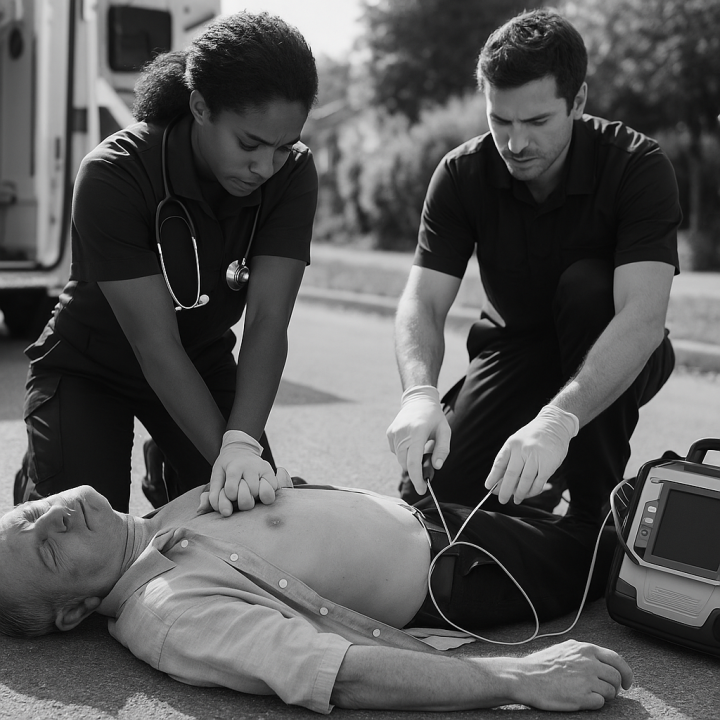Performing CPR in the field is a critical skill, but knowing when to begin—and when it’s appropriate to stop—is just as important. Whether you’re a healthcare provider or a trained bystander, making these decisions quickly and correctly can impact outcomes and resource use.
✅ When to Start CPR
Start CPR immediately when you encounter:
- Unresponsiveness + No Pulse
- Check for responsiveness and pulse. If absent, start chest compressions right away.
- No Normal Breathing
- Gasping or agonal breaths are not normal—initiate CPR if there’s no effective breathing.
- Drowning or Suspected Respiratory Arrest
- In cases like drowning or drug overdose, ventilation is critical. Start CPR with rescue breaths if trained.
- Collapse Witnessed by Bystanders
- Immediate chest compressions can sustain vital organs until advanced care arrives.
- Cardiac Arrest in Public Places
- Use an AED as soon as available and follow prompts. CPR should be ongoing in the meantime.
⛔ When to Stop CPR
Discontinuing CPR should only happen under specific conditions:
- Obvious Signs of Death
- Rigor mortis, decapitation, or lividity are indicators to withhold CPR.
- Return of Spontaneous Circulation (ROSC)
- If the patient regains a pulse and starts breathing, stop compressions but monitor closely.
- Transferred to Advanced Care
- Once EMS or hospital teams take over, they will guide or continue care.
- Exhaustion of the Rescuer
- If you are physically unable to continue and no one else can take over, stopping is acceptable.
- Medical Directive or DNR
- A valid Do Not Resuscitate order should always be honored.
Final Thoughts
Starting CPR can make the difference between life and death—but knowing when to discontinue is equally vital to patient care. In any situation, prioritize scene safety, clear communication, and teamwork if others are present.
CPR is a powerful tool. Use it wisely, and be ready to make the tough calls with knowledge and confidence.


